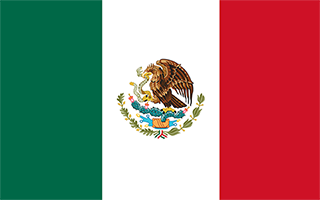Facts and Data
Webpages:
Official Unesco Page
Monte Alban (Instituto Nacional de Antropología e Historia - INAH)(spanish only)
View photos from OUR PLACE the World Heritage collection
Basis Data:
Unesco World heritage since: 1987
Size of heritage: 375 ha
- Buffer zone: 121 ha
Coordinates:
Longitude: -95,278°
Latitude: 17,062°
Summary
Inhabited over a period of 1,500 years by a succession of peoples – Olmecs, Zapotecs and Mixtecs – the terraces, dams, canals, pyramids and artificial mounds of Monte Albán were literally carved out of the mountain and are the symbols of a sacred topography. The nearby city of Oaxaca, which is built on a grid pattern, is a good example of Spanish colonial town planning. The solidity and volume of the city's buildings show that they were adapted to the earthquake-prone region in which these architectural gems were constructed.
Location on Map
Show bigger map on Openstreetmap
Historic Centre of Oaxaca and Archaeological Site of Monte Albán
The Historic Centre of Oaxaca and Archaeological Site of Monte Albán is a UNESCO World Heritage site located in the state of Oaxaca de Juarez, Mexico. This site encompasses both the historic center of the city of Oaxaca and the ancient ruins of Monte Albán, offering a unique blend of cultural and archaeological significance.
History
The history of this heritage site dates back thousands of years. The archaeological site of Monte Albán was once the capital of the Zapotec civilization, flourishing between 500 BCE and 800 CE. It served as a political, economic, and religious center, showcasing the advanced architectural and urban planning skills of the Zapotec people.
After the decline of Monte Albán, the region was inhabited by various indigenous groups, including the Mixtecs and the Aztecs. In the 16th century, the Spanish arrived and established the city of Oaxaca, which became an important colonial center. The blending of indigenous and Spanish cultures resulted in a unique architectural and artistic heritage that is still evident in the historic center of Oaxaca today.
Current State
The Historic Centre of Oaxaca and Archaeological Site of Monte Albán is a testament to the rich cultural heritage of the region. The archaeological site of Monte Albán is a sprawling complex of pyramids, temples, and tombs, offering a glimpse into the ancient Zapotec civilization. The site has been well-preserved, allowing visitors to explore the impressive structures and gain insight into the daily life and religious practices of the Zapotec people.
The historic center of Oaxaca, on the other hand, is a vibrant and bustling area that showcases the fusion of indigenous and Spanish influences. The city is known for its well-preserved colonial architecture, characterized by colorful facades, ornate churches, and charming cobblestone streets. The main square, known as the Zocalo, is the heart of the city and is surrounded by important landmarks such as the Cathedral of Oaxaca and the Government Palace.
Today, the Historic Centre of Oaxaca and Archaeological Site of Monte Albán attract a large number of tourists from around the world. Visitors can explore the archaeological site, marvel at the ancient ruins, and learn about the rich history of the Zapotec civilization. In the historic center of Oaxaca, they can immerse themselves in the vibrant local culture, sample traditional cuisine, and visit numerous museums and art galleries that showcase the region's artistic heritage.
Efforts have been made to preserve and protect this UNESCO World Heritage site. Conservation projects have been implemented to ensure the long-term preservation of the archaeological site of Monte Albán, while the historic center of Oaxaca is carefully maintained to retain its unique architectural and cultural character.
The Historic Centre of Oaxaca and Archaeological Site of Monte Albán is not only a testament to the rich history of the region but also a living heritage that continues to thrive and evolve. It serves as a reminder of the cultural diversity and historical significance of Mexico, attracting visitors who seek to explore and appreciate its unique treasures.
